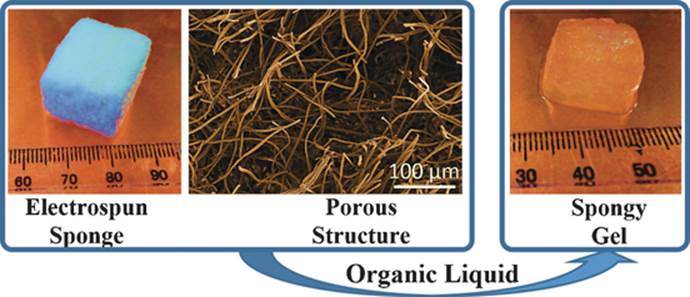News
Spongy Gels by a Top-Down Approach from Polymer Fibrous Sponges
14.02.2017
Spongy Gels by a Top-Down Approach from Polymer Fibrous Sponges
S. Jiang, G. Duan, U. Kuhn, M. Mörl, V. Altstädt, A. L. Yarin, A. Greiner Angew.Chem. Int.Ed. 2017, 56,3285 –3288.

Ultralight cellular sponges offer a unique set of properties. We show here that solvent uptake by these sponges results in new gel-like materials, which we term spongy gels. The appearance of the spongy gels is very similar to classic organogels. Usually, organogels are formed by a bottom-up process. In contrast, the spongy gels are formed by a top-down approach that offers numerous advantages for the design of their properties, reproducibility, and stability. The sponges themselves represent the scaffold of a gel that could be filled with a solvent, and thereby form a mechanically stable gel-like material. The spongy gels are independent of a time-consuming or otherwise demanding in situ scaffold formation. As solvent evaporation from gels is a concern for various applications, we also studied solvent evaporation of wetting and non-wetting liquids dispersed in the sponge.

